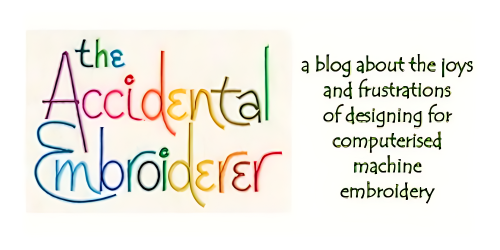The falcon
This little falcon (or maybe it’s a hawk?) started life as a
sketch for a commission for someone who wanted a fairly realistic hawk (or
falcon). I never finished it because the first version I did seemed a bit dull and
featureless. But the other day I thought I might as well get on and finish the design,
so I added a lot of detailed overstitching and also painted some fabric to
stitch it with. And the result is a lot better than I was expecting. It just
goes to show how important it is to choose the right fabric for an applique
like this, and also that “more is more” when it comes to detail. Minimalism is great
as an idea in interior decoration, but when it comes to this kind of embroidery,
minimalism is usually just dull. The eye needs something to play with
The falcon – final version and a little more interesting
